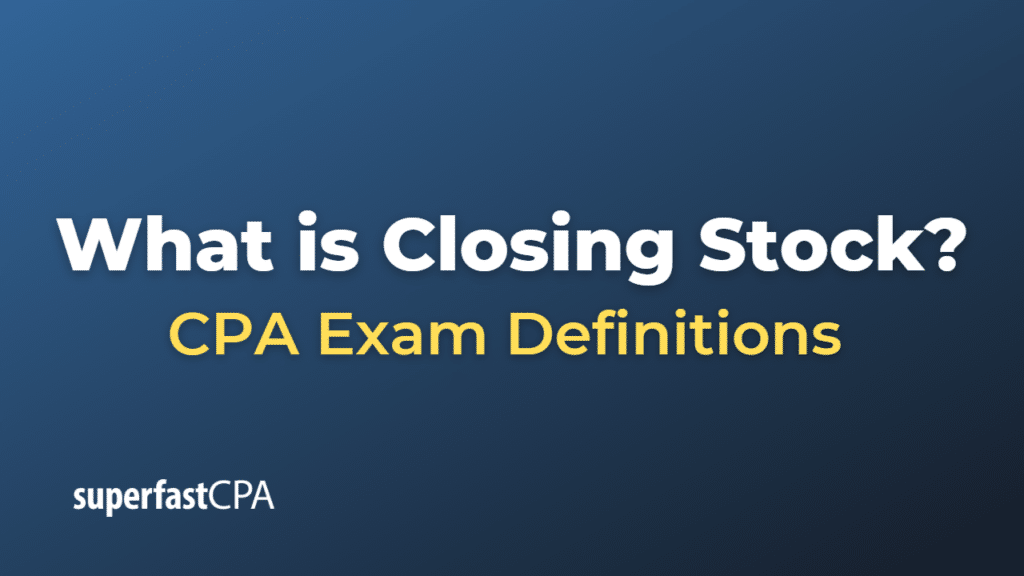Closing Stock
Closing stock, also known as ending inventory or year-end inventory, refers to the value of unsold goods or inventory remaining at the end of an accounting period, such as a month, quarter, or fiscal year. Closing stock is an essential component of a company’s financial statements, as it represents a portion of the company’s assets and directly affects the cost of goods sold (COGS) and gross profit calculations.
In the context of a manufacturing company, closing stock can include raw materials, work-in-progress, and finished goods, while for a retail or wholesale business, it consists of the unsold merchandise.
To calculate the closing stock, you need to follow these steps:
- Perform a physical inventory count: Count the number of each item in the inventory at the end of the accounting period.
- Determine the cost of each item: Assign a cost to each item based on the purchase price, production cost, or another appropriate method (e.g., FIFO, LIFO, or weighted average).
- Calculate the value of the closing stock: Multiply the number of each item by its assigned cost, and then sum the values for all items.
The closing stock is recorded on the balance sheet as a current asset and is used in the calculation of the cost of goods sold on the income statement:
Cost of Goods Sold (COGS) = Opening Stock + Purchases – Closing Stock
Accurate closing stock valuation is crucial for determining the financial health of a business and for making informed decisions regarding inventory management, purchasing, and pricing.
Example of Closing Stock
Let’s assume we have a small retail store called “XYZ Retail” that sells three types of products: A, B, and C. At the end of the fiscal year, we need to determine the value of the closing stock. The inventory data and cost information are as follows:
Product A:
- Quantity: 100 units
- Cost per unit: $10
Product B:
- Quantity: 150 units
- Cost per unit: $15
Product C:
- Quantity: 200 units
- Cost per unit: $5
Here’s how to calculate the closing stock for XYZ Retail:
- Perform a physical inventory count: The count shows 100 units of Product A, 150 units of Product B, and 200 units of Product C.
- Determine the cost of each item: The cost per unit for each product is already provided.
- Calculate the value of the closing stock:
- Product A: 100 units x $10 = $1,000
- Product B: 150 units x $15 = $2,250
- Product C: 200 units x $5 = $1,000
In this example, the closing stock value for XYZ Retail at the end of the fiscal year is $4,250. This amount will be recorded on the balance sheet as a current asset. It will also be used to calculate the cost of goods sold on the income statement, which in turn helps to determine the gross profit for the accounting period.













